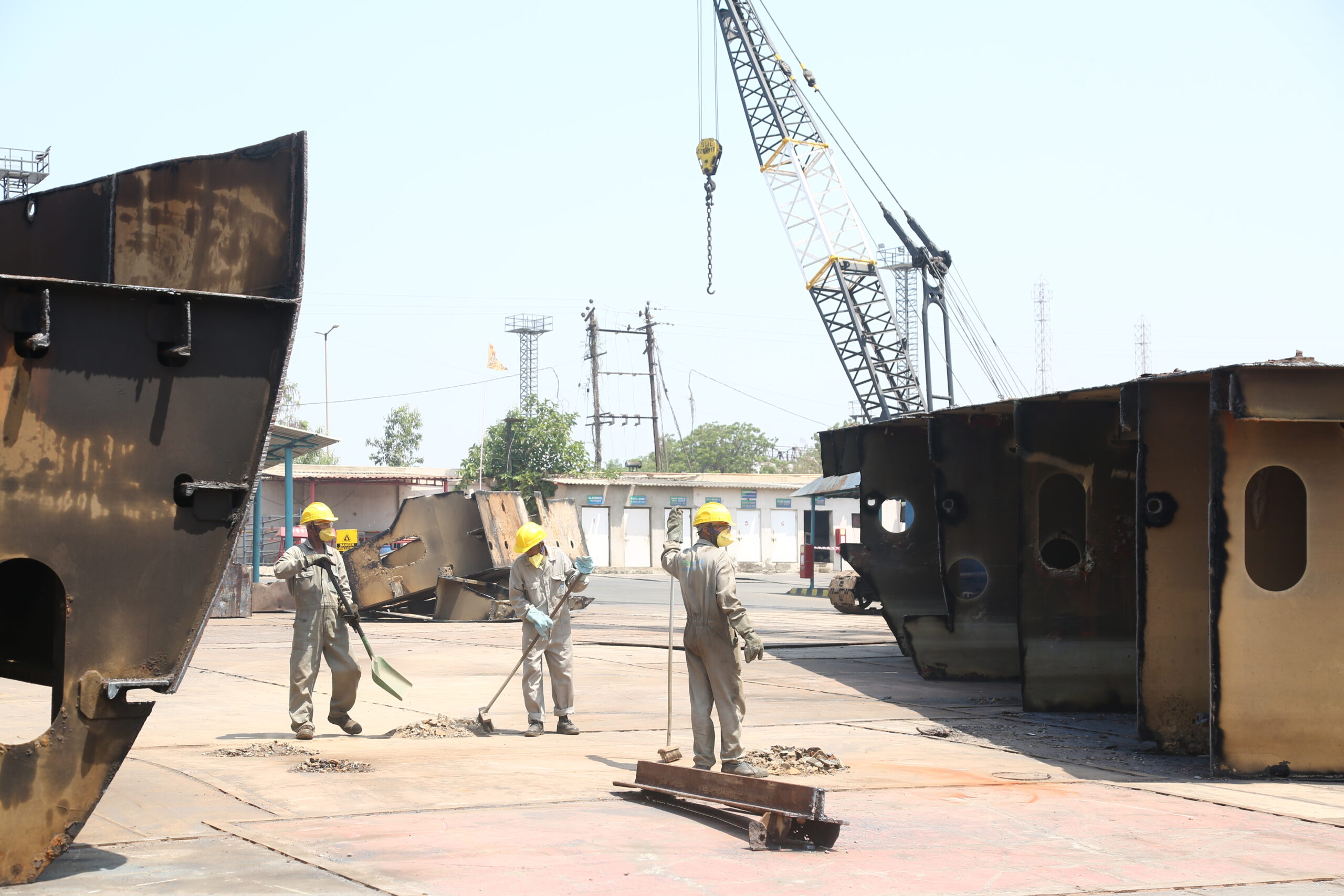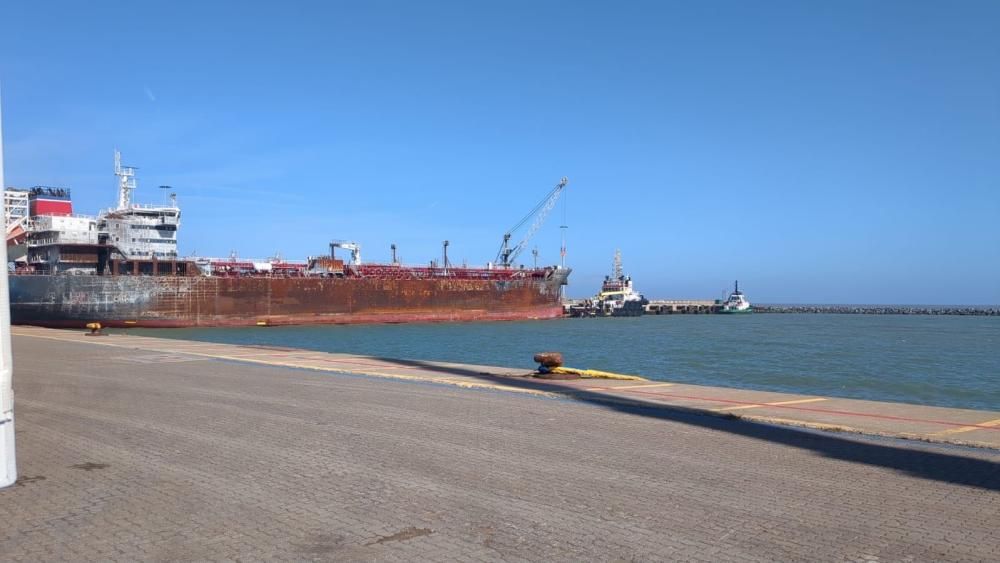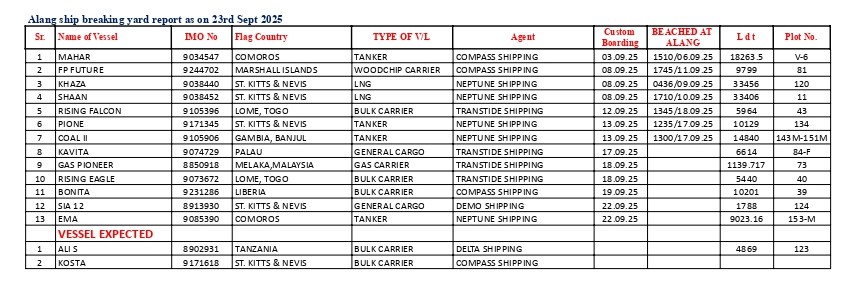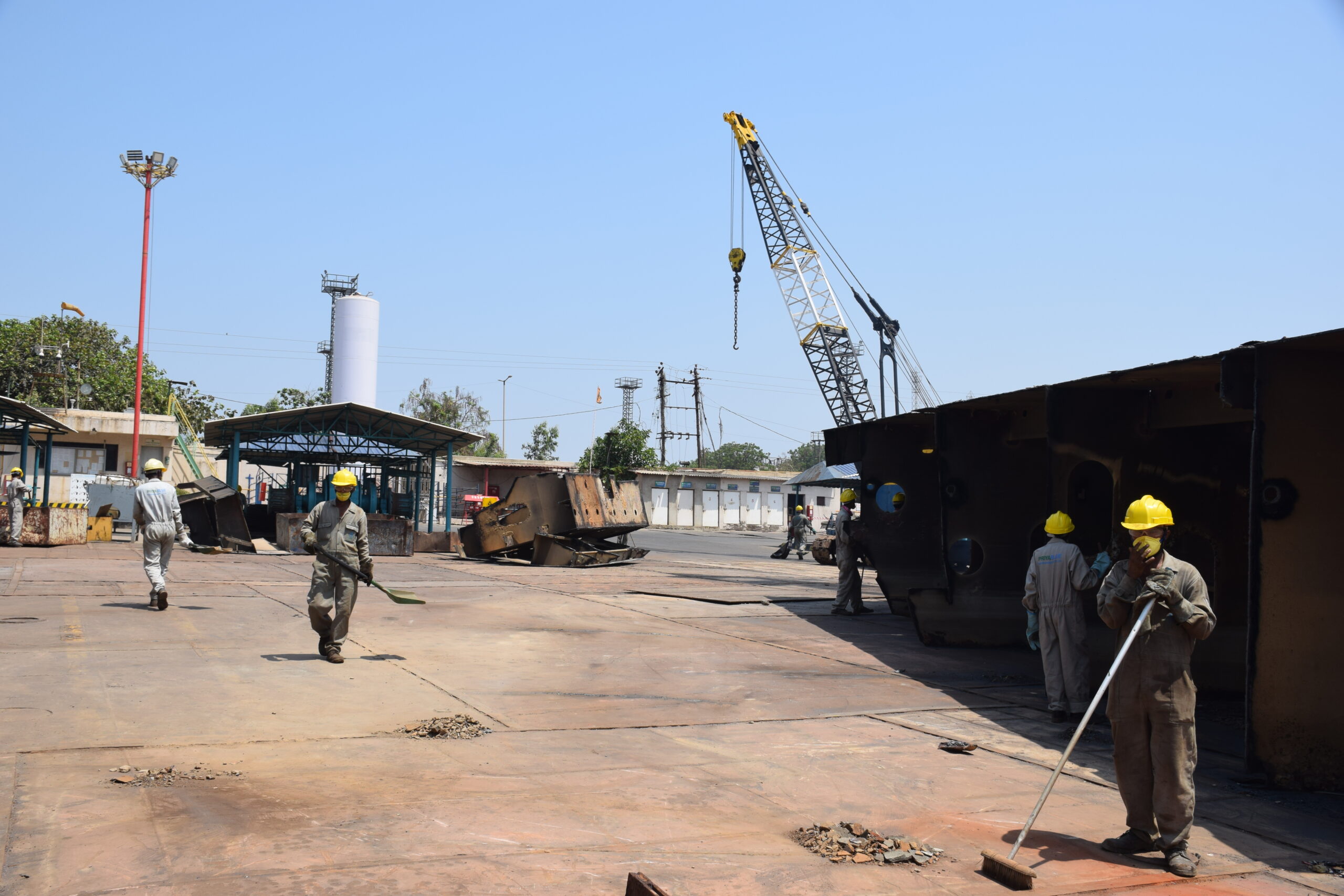The Last Voyage of Catherine Bright: The Global Journey of Ship Recycling
In March 1998, a massive 43,000-ton bulk carrier, known as the *Oak Wave*, was launched from a dry dock in Japan. Built to haul grain and other essential commodities worldwide, the $30 million vessel was a marvel of engineering and industrial strength. Over the next 25 years, it would change hands five times, sail under three different names, and bear the flags of two different nations. Each port it docked at, each cargo it carried, and each crew member it housed added to its storied history.
Yet, like all things, the “Oak Wave” — rechristened the “Catherine Bright” in 2018 — approached the end of its life cycle. In November 2023, after being sold for $5.9 million, Catherine Bright* embarked on a final, solemn journey to a destination it had never known: Gadani, Pakistan. Gadani, a town of about 10,000 people, is a place not for ships to dock and unload cargo, but for them to die. The town is home to one of the world’s largest shipbreaking yards, where vessels that have served their purpose are dismantled and recycled, piece by piece.
Gadani: The Graveyard of Giants
Gadani is not a typical port. Stretching over a 10-kilometre beach, it is an oil-slicked, sand-filled ship graveyard, where the hulks of once-mighty vessels are taken apart. The shipbreaking yards of Gadani, along with those in Alang, India, and Chattogram, Bangladesh, are responsible for dismantling nearly three-quarters of the world’s decommissioned ships each year. These yards have one critical advantage: deep water extending right up to the beach, allowing ships to be run aground without needing a dock.
As ships are broken down, their toxic contents — lead, mercury, heavy oil, carcinogens such as cadmium and asbestos, and sometimes even radioactive materials — are released into the environment. The process often results in oil spills and the contamination of local beaches with heavy metals. These toxins, carried by tides and currents, infiltrate delicate ecosystems and local fisheries, causing irreparable damage.
A 2018 United Nations Human Rights Council report condemned the shipbreaking industry as “another egregious example of an industry that continues to externalize impacts on poor workers and communities in developing countries.” The environmental toll of shipbreaking is undeniable, but so too is the human cost.
A Life on the Edge: Workers in Gadani
Gadani lies on the arid, rocky coast of Pakistan, 45 kilometres northwest of the bustling port city of Karachi. Here, amid the rusting carcasses of ships, as many as 12,000 workers earn their livelihoods. The work is gruelling and dangerous, with men clambering over ships with gas torches, drills, and cranes, cutting through steel and iron. For these labourers, the arrival of a new ship is a cause for celebration.
“Cheers go up when they get the call,” says Gul Nawab, a 60-year-old veteran of the yards. Once the ship is beached and secured, workers descend upon it, tearing it apart from bow to stern. The process can take months, with each ship requiring a crew of around 300 people to dismantle it entirely. The remnants of these ships — sheets of steel, piles of chains, empty gas cylinders, and rusted pipes — are loaded onto trucks bound for Karachi’s scrapyards. Even the most mundane items, like air conditioners and refrigerators, are salvaged and sold.
“Not a single bolt goes to waste,” says Fazal Subhan, a manager at one of the yards. Everything of value is extracted, sorted, and sold, including steel, iron, copper, rubber, and even engines and appliances. The ship that once sailed the seas with pride is reduced to a mere smear of oil on the sand, soon to be swallowed by the tide.
The Human Cost of Shipbreaking
Despite the economic value of shipbreaking, it is one of the world’s most dangerous jobs. The International Labour Organization (ILO) and Human Rights Watch have highlighted the industry’s poor safety standards. Many companies in the shipbreaking business cut corners on occupational and safety measures, and compensation for injuries is often below legally mandated levels. Workers speak of a critical lack of basic safety equipment, recounting tales of lost limbs, burns, and other injuries.
“God will hold the bosses accountable on the day of judgment,” says Jamal Baksh, a 55-year-old worker who lost four family members in a fire at Gadani in 2016. Some yards have made efforts to improve safety standards, especially after Pakistan ratified new global regulations under the Hong Kong Convention, which is set to come into force next June.
The Hong Kong Convention is an international agreement designed to regulate the recycling of ships, ensuring that shipbreaking yards adhere to stringent safety and environmental standards. The Convention requires yards to maintain an inventory of toxic materials on board each ship and to guarantee their environmentally sound disposal. It also mandates rigorous procedures to prevent hazards such as explosions and falling steel sheets, along with detailed incident reporting.
Subhan’s yard now requires workers to wear helmets, gloves, and heavy boots, and has established a “green zone” for storing oil removed from ships. However, the burden of safety often falls on the workers themselves, who must procure their own protective gear. At a nearby restaurant, labourers on break wear sandals and baseball caps instead of helmets or heavy boots.
“Safety gear is a luxury we can’t afford,” says Muhammad, a 44-year-old labourer. Workers often resort to using socks as gloves and shirts as masks, carrying heavy steel barefoot.
The Global Stakes of Ship Recycling
The dangers of shipbreaking are not limited to Gadani. The pressure is building on the global shipping industry to adopt safer, more responsible practices, particularly in Europe. The European Union (EU) has introduced regulations requiring ships flying the flag of an EU member state to be dismantled in approved facilities with concrete floors, spillways, and fluid recovery systems. However, while the EU accounts for 35% of the global fleet, only 7% of its ships are dismantled within its borders.
European shipbreaking yards, like those in Spain and Scotland, struggle to compete with the much lower labour costs and higher steel prices in South Asia. As a result, many yards in Europe operate well below capacity. Despite regulations intended to prevent ships from being dumped in poorer countries, freight companies often bypass these rules by changing the ship’s flag or its final destination before dismantling.
This practice of flagging ships to tax havens or countries with lax labor regulations, known as “flags of convenience,” has become common. One-third of EU-owned vessels do not fly an EU flag, and many ships on their final voyage switch to a “last-voyage flag” designed specifically for vessels headed to the scrapyard. Palau, a tiny nation in Micronesia, for example, is responsible for a significant percentage of last-voyage flags, despite having little to do with the global shipping industry.
The Future of Ship Recycling
The introduction of the Hong Kong Convention represents a significant step forward in regulating the shipbreaking industry, but challenges remain. Critics argue that the Convention’s standards are not stringent enough and that enforcement will be difficult, especially in countries with weaker regulatory frameworks. Some, like Ingvild Jenssen of Shipbreaking Platform, believe that the Convention should be ratcheted up to European levels, with stricter enforcement to prevent shipowners from simply switching flags to avoid responsibility.
The story of “Catherine Bright” is emblematic of the broader issues facing the global shipping and shipbreaking industries. As the world becomes increasingly aware of the environmental and human costs of ship recycling, pressure is mounting on governments, shipping companies, and investors to adopt more responsible practices. The journey of this once-mighty vessel to Gadani, where it will be dismantled and recycled, serves as a stark reminder of the complex and often troubling realities of global trade and industry.
Author: shipping inbox
shipping and maritime related web portal











